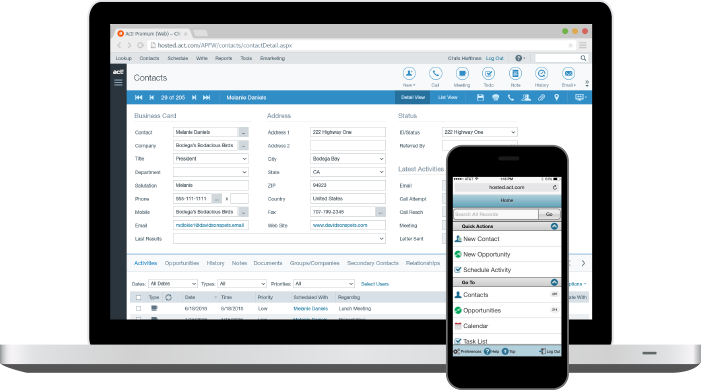The way business is done today, there is good ground to believe that success depends solely on how well you’re managing relationships with your customers. Trying to remain on the safe side, most companies invest money in so-perceived solid CRM systems to handle service issues for them, but the catch with CRM trends is that they are really hard to keep track of. By the time you’ve purchased your system, several new ones you had no clue about will have already been released.
So, is there actually a way to stay on the safe side? We believe there is. What certainly helps is looking at how CRM developed throughout the years, so that we’d understand what are its core functionalities companies should expect from any system they’re purchasing. The bells and whistles, on the other hand, come and go as we speak.
Which are the most important events that marked CRM software history? Take a look at our retrospective timeline to find out.

Informal customer evaluation – How feedback came to be a decision-making factor

First tools for customer relationship management weren’t very sophisticated.
We can confidently claim businesses were interested in their customers’ opinion ever since they appeared, but unlike today, local groceries with few regular customers didn’t really struggle to know what customers think. Today, when business is done online and customers are hard to track, it takes more than simply asking to improve your relationship with them.
It was right before 1980 that retailers and service providers started to rely on customers’ opinion, but did that in a rather informal way. Most of their activities still came down to front-line consultation and annual surveys that didn’t reveal much except of whether they liked the product they got or not. Sometime during 1982, the trend was reshaped into database marketing, and managers started thinking of new ways to communicate with their customers.
From a technological point of view, the 1970s were the decade of standalone mainframe systems that automated sales and digitized manual customer files to make management a bit easier. While many experts believed this was how far technology would ever get, focused developers were working on transforming relational bases to real customer hubs that would manage more than names and orders, and managers couldn’t have been happier about it. The credit for database marketing as it is today should be given to Kate and Robert Kestnbaum, who first thought of assembling and analyzing customer data, and applying statistical methods to make that data work for improving sales strategies.
The emergence of contact management and lead efficiency
In 1986, Pat Sullivan and Mike Muhney from Dallas introduced contact management to the corporate environment with their brand new product Act! and applied in practice the principle of digital rolodexes. This was only the beginning, as in 1992 and 1993, sales processes were undergoing full automation, and businesses discovered there are multiple opportunities down the pipeline they could capture to make the most of their leads’ potential. Act! is still active, and it preserved its leadership position throughout the years.
The first attempt to design a real CRM system took place in 1993, and was undertaken by Siebel Systems. This project cost Tom Siebel a reported amount of $5.5 billion.

Act! is still used today, though in a much more modern way.
The pioneer CRM system
It was in 1995 that we got to talk about Customer Relationship Management as a term. According to some sources, it was Gartner that invented the CRM concept, while others prefer to give credit to IBM and Siebel. By 1997, CRM was already expanding its reach beyond plain customer communication, and covered operations such as enterprise resource planning, marketing, shipping, and much more.
Unlike most BPMs that took a while to go mobile, CRMs undertook this huge step only in 1999. As incredible as it sounds, a CRM app was already available at the dawn of the new millenium, known by the name Siebel Sales Handheld. Oracle, PeopleSoft, and SAP Technologies didn’t take too long to introduce CRMs of their own.
The Microsoft interference that revolutionized CRM
The beginning of the 2000s will be remembered by the growing CRM bubble and unlimited attempts to build the perfect product, among which there were more unsuccessful than successful ones. What genuinely saved the CRM world was the entrance of Microsoft in 2003, when the company acquired Navision, and decided to merge popular services like Outlook and MS Office with its brand new Dynamics CRM.
A year later, in 2004, SugarCRM launched the first open source CRM system. This small salesforce team used to work on the company’s enterprise projects, but eventually decided to keep the best part of their work for themselves. Even nowadays, SugarCRM is widely appreciated for its recognizable interface and handy feature suite.
Amazon also had a vital role in the process, launching its EC2/S3 designed for individuals and startups looking to save money while working on rented computers. By the time, CRM was already shifting to cloud, and helping save large amounts of money. The competitive edge for most developers was to introduce a system that can be customized to meet the needs of all companies.
Appearance and development of social CRM
2008 and 2009 were marked by the appearance of social CRM. While social networks were gaining momentum, CRM developers took advantage of the steam to make their customer services more interactive. Thanks to this trend, most businesses nowadays can be contacted (or purchased from) on your favorite social network. In the following years, CRMs were developing rapidly, and some of today’s leading provides like Nutshell and Base were arriving on the market.
In 2009, Gartner organized the first Customer Relationship Management Summit, where CRM was finally shaped, and obtained the form it has today.

Connections to business intelligence and communication software
By 2013 and 2014, CRMs were becoming more and more customer-oriented, and because of this developers believed it was a good idea to enrich these systems with analytic and business intelligence features. In 2014, in fact, CRMs were bridged to call centers too, in order to provide a variety of channels for customers to contact providers. In this way, all difficulties related to managing contacts from multiple systems were eliminated.
CRM at present
There wasn’t much left to change in the CRM concept in 2016, or at least that’s what it seemed. This was the year when most software solutions shifted from ‘one size fits all’ products to systems designed for specific vertical industries, and CRMs didn’t really stay behind. Instead, they became more intuitive, more competitive, but at the same time less predictive.
What the future holds?
What we can expect from CRM software in the closest future is to further facilitate customers’ journey by allowing them to switch channels seamlessly, and contact all representatives they need instead of just tech support. At the same time, CRM will be more complete and intuitive, and entirely hosted in the cloud and delivered as SaaS. Both end customers and company executives will benefit from it, as it will continue improving collaboration between agents and employees.
